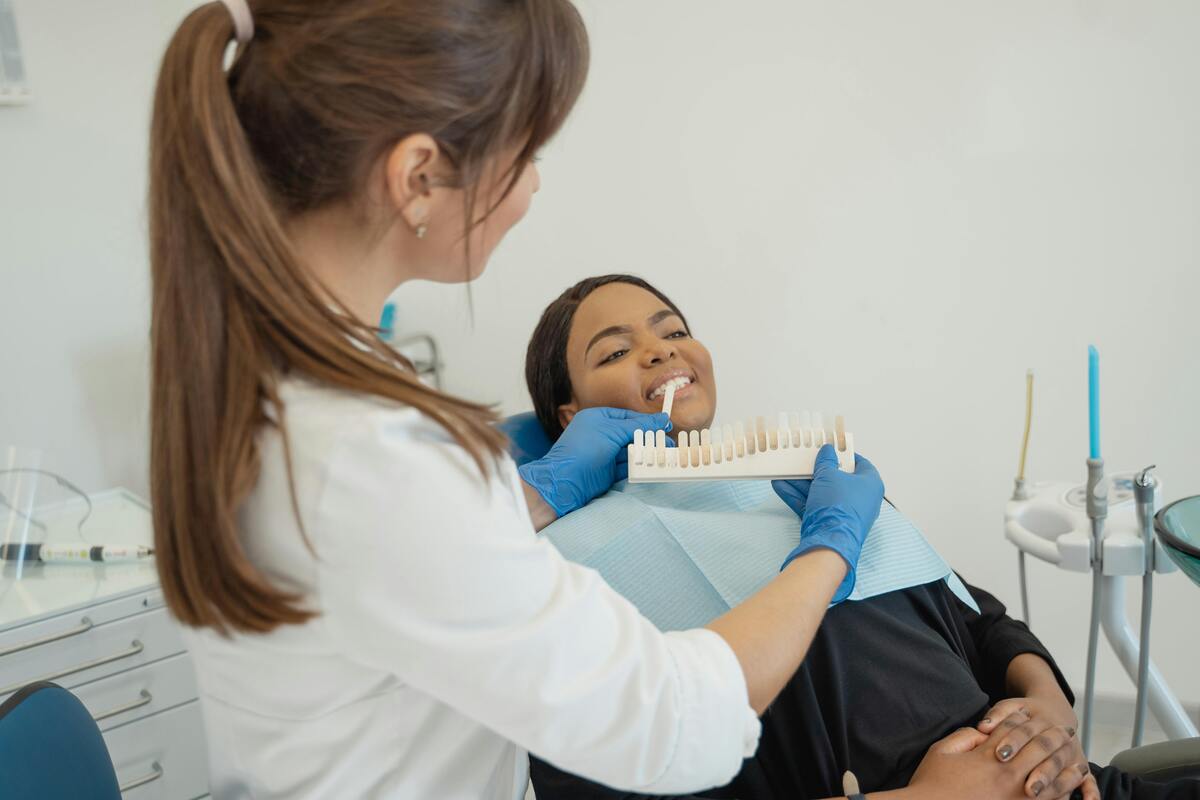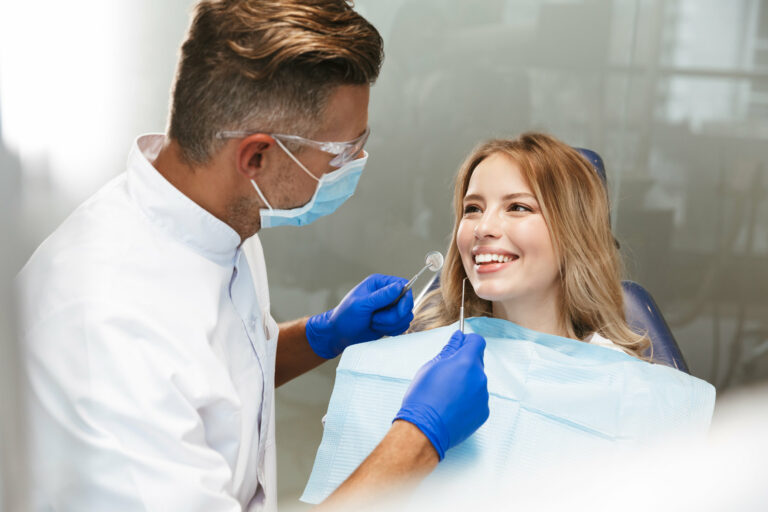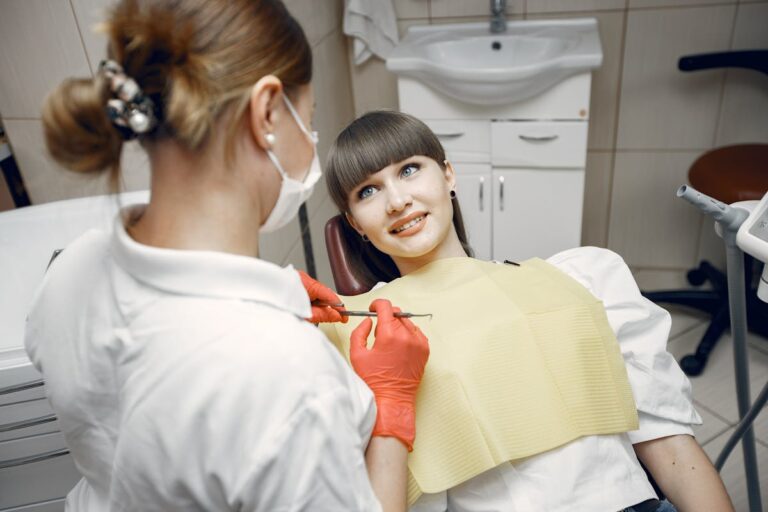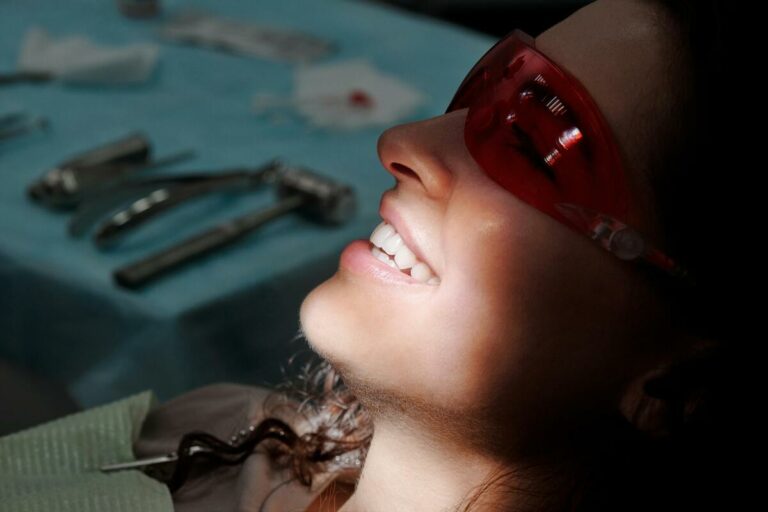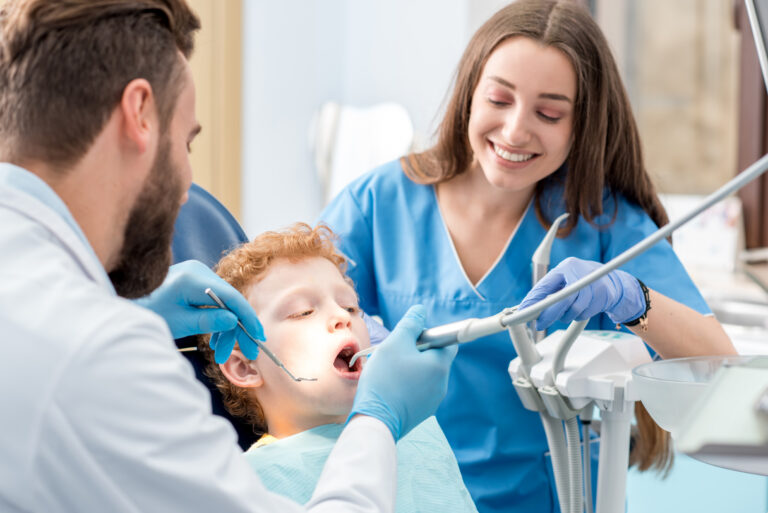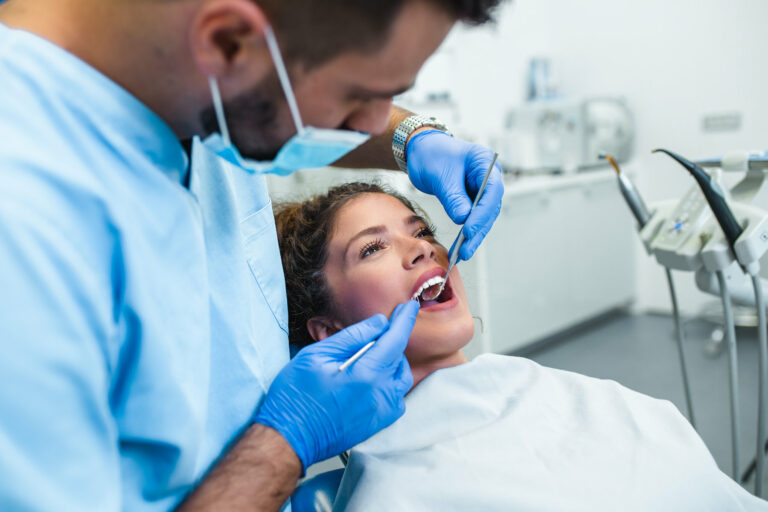Cosmetic Dentistry Specialists in Hoboken: Transforming Smiles With Modern Techniques
Cosmetic dentistry specialists in Hoboken are advancing oral aesthetics through state-of-the-art methodologies and technological innovations. Utilizing digital imaging and 3D printing, they craft precise, individualized treatment plans. Techniques such as minimally invasive laser treatments and custom veneers are employed to enhance dental function and appearance. These professionals integrate artistry with scientific precision, delivering orthodontic solutions like Invisalign. This synthesis of modern techniques begs further exploration into how these experts elevate patient confidence and satisfaction.
The Evolution of Cosmetic Dentistry
Although the field of cosmetic dentistry has ancient roots, its evolution over the centuries has been marked by significant technological and methodological advancements. Historical milestones include the development of dental crowns and bridges in the 19th century, which laid the groundwork for modern prosthodontics. The introduction of porcelain inlays and onlays in the early 20th century represented a pivotal shift towards more natural-looking restorations. These industry advancements were further propelled by the advent of dental bonding in the 1970s, utilizing composite resins for aesthetic enhancement. The refinement of bleaching techniques in the 1980s revolutionized tooth whitening procedures. By the late 20th century, the integration of digital imaging and CAD/CAM technologies facilitated precise, customized dental solutions, marking a new era in cosmetic dentistry.
Cutting-Edge Technology in Smile Transformations
Building upon the historical advancements in cosmetic dentistry, the integration of cutting-edge technologies today is transforming smile aesthetics with unprecedented precision and efficacy. The advent of 3D printing allows for the creation of precise dental restorations, enhancing structural and aesthetic outcomes. Laser technology facilitates minimally invasive procedures, reducing recovery time and improving patient comfort. Smile simulation software and digital impressions, captured through advanced intraoral scanners, enable accurate treatment planning by visualizing outcomes before procedures commence. Virtual consultations augment patient education, offering a thorough understanding of treatment options tailored to modern aesthetic trends. Additionally, augmented reality applications provide real-time visualizations, assisting both practitioners and patients in achieving desired results efficiently. Collectively, these technologies are redefining the landscape of cosmetic dentistry.
Personalized Smile Makeovers: Tailored to You
In the domain of personalized smile makeovers, the development of customized treatment plans is paramount, ensuring that each individual’s unique anatomical and aesthetic considerations are meticulously addressed. During the thorough consultation process, clinicians employ a multifaceted approach, utilizing diagnostic imaging and patient-specific data to inform and guide the decision-making process. This tailored methodology not only aligns with the patient’s unique aesthetic preferences but also optimizes the functional outcomes of the cosmetic procedures undertaken.
Customized Treatment Plans
When starting on the journey of cosmetic dentistry, the development of customized treatment plans is essential for achieving ideal results. These plans are meticulously designed by dental professionals to address the specific dental needs and aesthetic goals of each individual. By incorporating diagnostic assessments and advanced imaging techniques, practitioners guarantee a thorough understanding of the patient’s oral health status. This personalized approach enhances patient satisfaction by aligning expectations with achievable outcomes.
Furthermore, treatment flexibility is a cornerstone of customized plans, allowing adjustments as needed to accommodate changes in patient preferences or unforeseen clinical developments. This adaptability guarantees that the trajectory of care remains ideal, maximizing the efficacy and efficiency of the interventions. Ultimately, customized treatment plans are pivotal in the domain of cosmetic dentistry, guaranteeing precision and patient-centered care.
Unique Aesthetic Preferences
How do dental practitioners guarantee that each patient receives a smile makeover that perfectly aligns with their unique aesthetic preferences? By integrating advanced diagnostic tools and digital imaging, practitioners meticulously analyze facial symmetry, dental structure, and occlusal dynamics. This process guarantees the customization of cosmetic interventions such as veneers, crowns, or orthodontic solutions. Unique aesthetic preferences are heavily influenced by personal style and cultural influences; consequently, practitioners incorporate these elements into treatment designs. They utilize shade guides and morphology charts to adapt treatments, guaranteeing the final outcome resonates with the individual’s desired appearance. Additionally, patient feedback is paramount; iterative adjustments are made to refine the aesthetics until ideal satisfaction is achieved, aligning the smile makeover with the patient’s personal aesthetic vision.
Comprehensive Consultation Process
Initiating the extensive consultation process for a personalized smile makeover involves a systematic and thorough evaluation by the dental practitioner. This initial phase encompasses a detailed assessment of oral health, detailed digital imaging, and precise diagnostic impressions. Discussion topics during this phase include the patient’s aesthetic goals, dental history, and potential treatment options, guaranteeing a tailored approach. The practitioner utilizes advanced imaging technology to simulate potential outcomes, facilitating an informed dialogue. Patient feedback is integral, allowing for adjustments to be made to the proposed plan, aligning it with the individual’s expectations and preferences. This iterative process guarantees the formulation of a customized treatment strategy, optimizing both functional and aesthetic results, and underscores the importance of a collaborative doctor-patient relationship.
The Art and Science of Veneers
Veneers, a staple in cosmetic dentistry, represent a sophisticated fusion of art and science designed to enhance dental aesthetics. These thin shells, primarily composed of advanced veneer materials such as porcelain or composite resin, are meticulously crafted to mimic the natural appearance of teeth. The application techniques involve precise bonding to the tooth’s surface, necessitating minimal enamel removal to guarantee a seamless integration. Ideal results are achieved through an intricate layering process, allowing customized shading and translucency. The procedural success hinges on a thorough understanding of occlusion dynamics and periodontal health. This integration of material science and technical precision underscores the transformative power of veneers, providing both functional improvement and aesthetic enhancement in patients seeking to rejuvenate their smiles.
Teeth Whitening: Achieving the Perfect Shade
Teeth whitening, a pivotal aspect of cosmetic dentistry, encompasses a variety of methodologies aimed at achieving ideal aesthetic outcomes. Professional whitening options, such as in-office bleaching with hydrogen peroxide or carbamide peroxide agents, provide rapid and controlled results under dental supervision. Conversely, at-home whitening kits, typically utilizing lower concentration bleaching agents, offer a more gradual approach, yet both methods necessitate adherence to maintenance protocols to guarantee long-lasting whitening results.
Professional Whitening Options
In the domain of cosmetic dentistry, professional whitening options stand as a highly effective method for achieving the ideal tooth shade. These procedures utilize advanced whitening products containing higher concentrations of hydrogen peroxide or carbamide peroxide compared to over-the-counter solutions. Administered under controlled clinical settings, these agents penetrate enamel to break down intrinsic stains, thus enhancing aesthetics and ensuring uniformity in tooth coloration.
The process is designed to enhance smile maintenance by providing long-lasting results. Dentists often employ adjunct techniques like light-activated systems to accelerate the chemical reactions, thereby maximizing the whitening impact. Professional oversight minimizes risks of enamel erosion or gum irritation, ensuring safety and efficacy. This clinical intervention remains a cornerstone in cosmetic dentistry, offering patients a scientifically validated path to achieving optimal dental aesthetics.
At-Home Whitening Kits
How do at-home whitening kits compare to professional treatments regarding efficacy and safety? At-home whitening kits, widely recognized for their DIY whitening techniques, typically contain lower concentrations of active ingredients like hydrogen peroxide compared to professional treatments. This reduced concentration impacts their efficacy, often resulting in less dramatic whitening outcomes. Safety considerations are paramount, as improper use of these kits can lead to gum irritation or enamel damage. Unlike professional supervision, consumers lack personalized guidance, increasing the risk of misuse. Although these kits offer convenience and cost-effectiveness, their results are generally less predictable. Professional treatments, on the other hand, involve customized applications and advanced equipment, minimizing potential adverse effects while optimizing whitening efficiency. Users are advised to consult dental professionals before commencing any at-home regimen.
Long-Lasting Whitening Results
When considering the pursuit of long-lasting whitening results, one must evaluate the effectiveness and durability of various teeth whitening methods. Clinically, professional teeth whitening treatments, such as in-office bleaching with hydrogen peroxide or carbamide peroxide, offer superior efficacy. These agents penetrate enamel to break down stains, yielding significant shade enhancement. The long-lasting effects of these treatments are contingent upon adherence to post-procedural maintenance tips. Patients are advised to limit consumption of chromogenic substances, such as coffee and tobacco, which can compromise results. Additionally, the use of custom-fitted trays for periodic at-home touch-ups with dentist-recommended formulations can prolong whitening outcomes. Implementing these strategies guarantees the preservation of the desired dental aesthetics, thereby maximizing the longevity of the whitening treatment.
Advanced Orthodontic Solutions for Adults
A growing number of adults are seeking advanced orthodontic solutions to address dental misalignments that were previously neglected or have developed over time. Adult orthodontics now encompasses innovative treatments such as Invisalign options, lingual braces, and clear aligners, offering discrete yet effective corrective measures. Invisalign options utilize custom-fabricated transparent aligners, facilitating gradual tooth movement without the visibility associated with traditional brackets. Lingual braces, affixed to the lingual surfaces of the teeth, present a concealed alternative for those desiring orthodontic modifications without aesthetic compromise. Clear aligners, similar in function to Invisalign, provide a sequential approach to realignment, emphasized by their removability and minimal interference with daily oral hygiene. These solutions cater to adult patients prioritizing both functionality and aesthetics in their treatment.
The Role of Digital Imaging in Treatment Planning
Digital imaging revolutionizes treatment planning in cosmetic dentistry by enhancing diagnostic accuracy and facilitating precise procedural execution. This advanced technology employs digital diagnostics to capture high-resolution images of dental structures, allowing clinicians to assess and visualize intricate details with remarkable clarity. Imaging accuracy is paramount, as it enables the detection of minute anomalies that may otherwise be overlooked with traditional methods.
Through three-dimensional imaging, practitioners can create thorough treatment blueprints tailored to individual patient needs. These digital models assist in simulating potential outcomes and refining procedural strategies. The integration of digital imaging into treatment planning not only optimizes the precision of interventions but also enhances communication between dental professionals and patients, ensuring informed decision-making and improving overall clinical outcomes in cosmetic dentistry.
Boosting Confidence Through Smile Enhancements
Incorporating advanced imaging techniques into cosmetic dentistry sets the stage for transformative smile enhancements that markedly boost patient confidence. Utilizing precise digital models and simulations, dental professionals can tailor interventions to align with individual anatomical and aesthetic preferences, optimizing outcomes. Smile psychology underscores the significant role of dental aesthetics in self-esteem, where the correction of dental anomalies fosters a substantial confidence boost. Procedures such as veneers, bonding, and Invisalign leverage modern materials and technologies to achieve seamless integration with natural dentition. This alignment is pivotal in achieving not only functional improvements but also psychological benefits. As patients perceive their improved smiles, the psychological impact is substantial, enhancing social interactions and personal well-being, thereby fulfilling both aesthetic desires and emotional needs.
Choosing the Right Cosmetic Dentist in Hoboken
Selecting the ideal cosmetic dentist in Hoboken requires a meticulous evaluation of several critical factors to guarantee superior dental care outcomes. Primary among these is the assessment of dentist credentials, which includes verifying their educational background, board certifications, and specialized training in cosmetic dentistry. Such qualifications are imperative for confirming that the practitioner is proficient in advanced techniques and technologies. Additionally, patient testimonials serve as an essential resource for evaluating the dentist’s reputation and service quality. These firsthand accounts provide insights into patient satisfaction, clinical outcomes, and the dentist’s ability to address individual aesthetic concerns effectively. Analyzing a combination of these elements guarantees a thorough assessment, facilitating an informed decision-making process that aligns with the patient’s cosmetic dental objectives.
Frequently Asked Questions
What Is the Average Cost of Cosmetic Dentistry Procedures in Hoboken?
The average pricing for cosmetic dentistry procedures in Hoboken varies, influenced by cosmetic options selected. Common procedures include veneers, bonding, and whitening. Prices range from $300 for basic whitening to $2,500 per tooth for advanced veneer applications.
How Long Do Results From Cosmetic Dentistry Typically Last?
The longevity of cosmetic dentistry results varies, influenced by factors such as material durability, oral hygiene practices, and lifestyle habits. Maintenance tips include regular dental check-ups, proper brushing, and avoiding stain-inducing substances to enhance result longevity.
Are Cosmetic Dentistry Procedures Covered by Insurance?
Cosmetic dentistry procedures typically encounter insurance limitations due to their elective nature. Coverage options vary, often restricted to medically necessary interventions. Patients should consult their insurance providers for detailed explanations of specific policy coverage and exclusions.
What Should I Expect During My First Consultation With a Cosmetic Dentist?
During the initial consultation, the cosmetic dentist conducts an initial assessment, evaluating dental health through diagnostic tools. They then discuss treatment options, including procedural details, potential outcomes, and financial considerations, ensuring informed decision-making tailored to individual patient needs.
Can Cosmetic Dentistry Fix a Gummy Smile?
Cosmetic dentistry addresses a gummy smile through various solutions, including gingivectomy and crown lengthening. These cosmetic procedures involve precise gingival tissue removal and reshaping, improving gum-to-tooth ratio for enhanced aesthetic appearance and balanced smile proportions.
